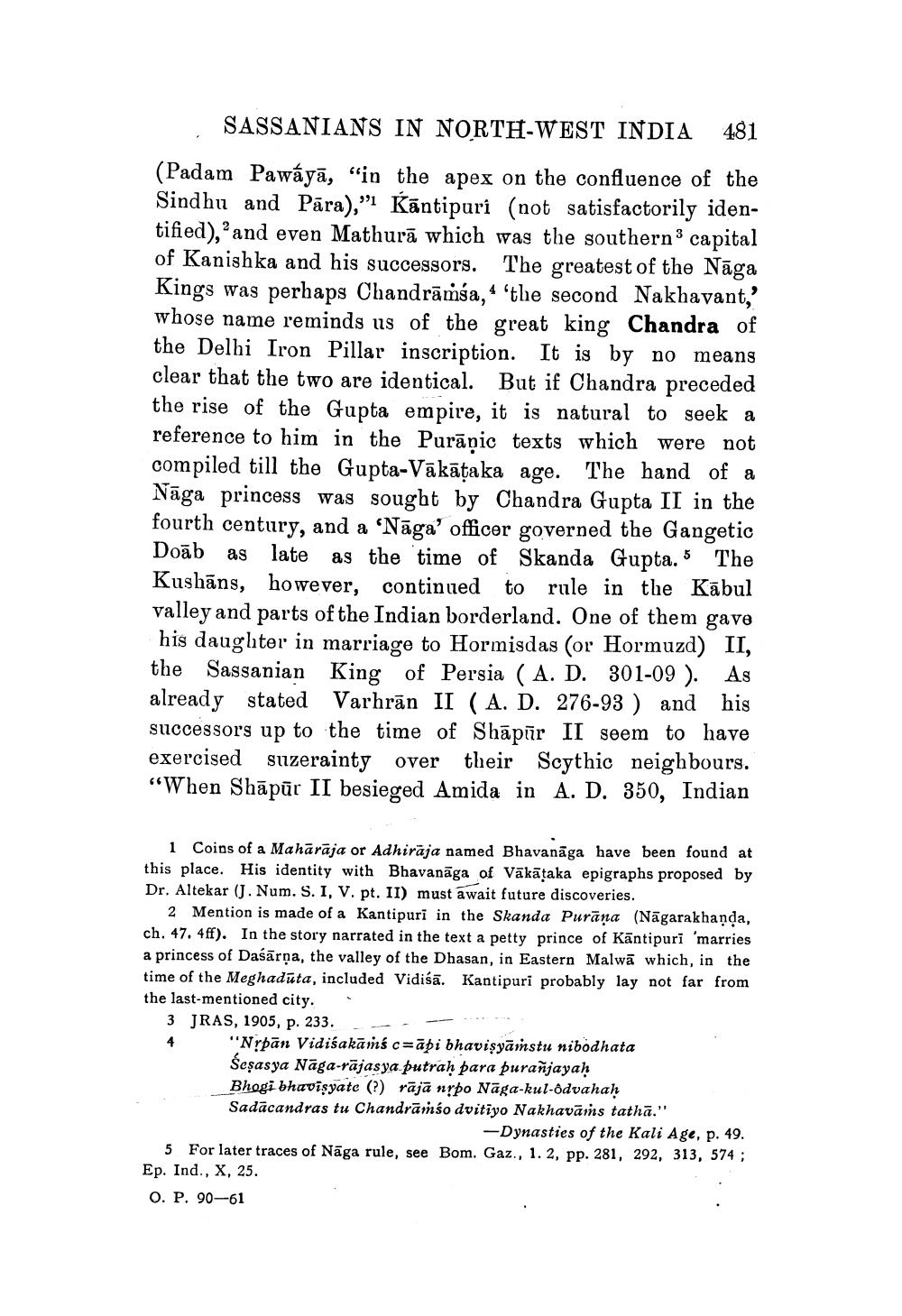________________
SASSANIANS IN NORTH-WEST INDIA 481
(Padam Pawaya, "in the apex on the confluence of the Sindhu and Para)," Kantipuri (not satisfactorily identified), and even Mathura which was the southern capital of Kanishka and his successors. The greatest of the Naga Kings was perhaps Chandramsa, 'the second Nakhavant,' whose name reminds us of the great king Chandra of the Delhi Iron Pillar inscription. It is by no means clear that the two are identical. But if Chandra preceded the rise of the Gupta empire, it is natural to seek a reference to him in the Puranic texts which were not compiled till the Gupta-Vakaṭaka age. The hand of a Naga princess was sought by Chandra Gupta II in the fourth century, and a 'Naga' officer governed the Gangetic Doab as late as the time of Skanda Gupta. 5 The Kushāns, however, continued to rule in the Kabul valley and parts of the Indian borderland. One of them gave his daughter in marriage to Hormisdas (or Hormuzd) II, the Sassanian King of Persia (A. D. 301-09). already stated Varhran II (A. D. 276-93) and his successors up to the time of Shapur II seem to have exercised suzerainty over their Scythic neighbours. "When Shapur II besieged Amida in A. D. 350, Indian
As
1 Coins of a Mahārāja or Adhiraja named Bhavanaga have been found at this place. His identity with Bhavanaga of Vakaṭaka epigraphs proposed by Dr. Altekar (J. Num. S. I, V. pt. II) must await future discoveries.
2 Mention is made of a Kantipuri in the Skanda Purana (Nagarakhanda, ch. 47. 4ff). In the story narrated in the text a petty prince of Kantipuri 'marries a princess of Daśārņa, the valley of the Dhasan, in Eastern Malwa which, in the time of the Meghaduta, included Vidiśā. Kantipuri probably lay not far from the last-mentioned city.
3 JRAS, 1905, p. 233.
4
"Nrpan Vidiśakāmś c=api bhaviṣyamstu nibodhata Seṣasya Naga-rajasya putraḥ para puranjayaḥ Bhogi bhavisyate (?) raja nṛpo Naga-kul-ôdvahaḥ Sadacandras tu Chandramśo dvitiyo Nakhavams tatha." -Dynasties of the Kali Age, p. 49.
5 For later traces of Naga rule, see Bom. Gaz., 1. 2, pp. 281, 292, 313, 574; Ep. Ind., X, 25.
O. P. 90-61




